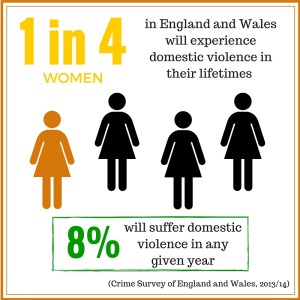In order to have access to this article, email us at thedocumentco@hotmail.co.uk
Ref No: 4269

CONTENTS
Varying Forms of Domestic Violence. 5
Controlling Domestic Violence. 8
Domestic Violence against women in United Kingdom. The concept of domestic violence is often restricted to the impression of men battering women. This chapter has been planned to define the domestic violence and its associated viewpoints with elaboration.
The review of the literature, therefore, focuses on the underlying factors and types of violence that may interconnect with violence penetrated at domestic level. Nonetheless, regardless of different forms of domestic violence, it has been estimated over and again that women are the most affected in these instances (Bunch et al., 2018, pp.14-32).
A common social approach to the notion of ‘domestic violence’ typically refers to the men beating the women. It has been determined that a notable number of women in a progressive region like the United States of America suffers from the terrorization implemented by their male partners in order to keep maintain dominance.
These male partners may include the husbands or other intimate partners (Straus, Gelles & Steinmetz, 2017; Johnson & Ferraro, 2000, pp.948-963). Due to this typical feature of social discourse that primarily accounts men for instigating violence on a domestic level, the majority of the literature has addressed the subject of men controlling the women by employing violence in intimate relationships (Heise & Garcia-Moreno, 2002).
Over the time, it has been realized through studies of social sciences that domestic violence is not limited to the concept of men hurting the women; it may pragmatically al the forms of violence that are practised between adult partners involve in an intimate relationship.Domestic Violence against women in United Kingdom
These relationships may include a broad range of couples, who may have been settled together through matrimony, in a live – in a relationship, or casual dating. Similarly, these couples may include individuals of both same sex or opposite gender (Hattery, 2009; Johnson & Ferraro, 2000, pp.948-963).
As per the observations conducted over the course of time, it has been determined that domestic violence, or particularly the violence implemented by an intimate partner, is the most common approach to domestic abuse.
It has been presumed that the underlying factors of domestic violence may penetrate through the extensions of the motivation of the offender, social connection of both the involved individuals, the cultural perspective of the couple, and the type of violence that is being performed.
However, the most emphasis is pressed upon the conception of control over the partner (Johnson & Ferraro, 2000, pp.948-963). The issue of keeping a control or dominating hand over an intimate partner is the most commonly perceived element that builds the foundation of domestic violence (Faramarzi, Esmailzadeh & Mosavi, 2005, pp.225-231).
The idea of control is extensively addressed and countered in the literature based on feminism theme that aims to liberate women from social obstacles. It has been seen that men may consider themselves entitled to implement violence in order to conceive control over women, which is often openly and extendedly supported by the values of patriarchy (Muravyeva, 2017).
Due to the factor of patriarchal values, it is again considered that domestic violence is primarily instigated by the male partner in a heterosexual relationship. However, it should be kept in consideration that domestic violence may equally prevail among homosexual couples including both gays and lesbians, or bisexual individuals (Cannon, 2015, p.65; Kaschak, 2014).
Furthermore, the type of violence may not only include physical hurting and may expand to various forms (Barnett, Miller-Perrin & Perrin, 2005).
Varying Forms of Domestic Violence
Domestic violence is often perceived with gender symmetry inclining more towards the male being offenders and women being in the victims in violent cases of domestic nature. However, studies have identified different forms of domestic violence that have been relaying in the society for quite a long time.
It has been identified that an intimate relationship may realize to have a potential of any four of the possible patterns of violence (Johnson, 2010; 2000a; 1995, pp.283-294). These four major patterns include:
- Common Couple Violence (Simpson et al., 2007, pp.270-283; Johnson, 1995, pp.283-294),
- Intimate Terrorism (Johnson, 2010),
- Violent Resistance (Johnson, 2010),
- Mutual Violent Control (Johnson, 2006, pp.1003-1018).
The categorization of the form of domestic violence is not determined by single instances observed in a relationship. Rather, the type of domestic violence is categorized on the basis of varying encounters that may occur in a relationship. A general pattern is identified with each incident that a partner may impose with the…….

Recent Comments